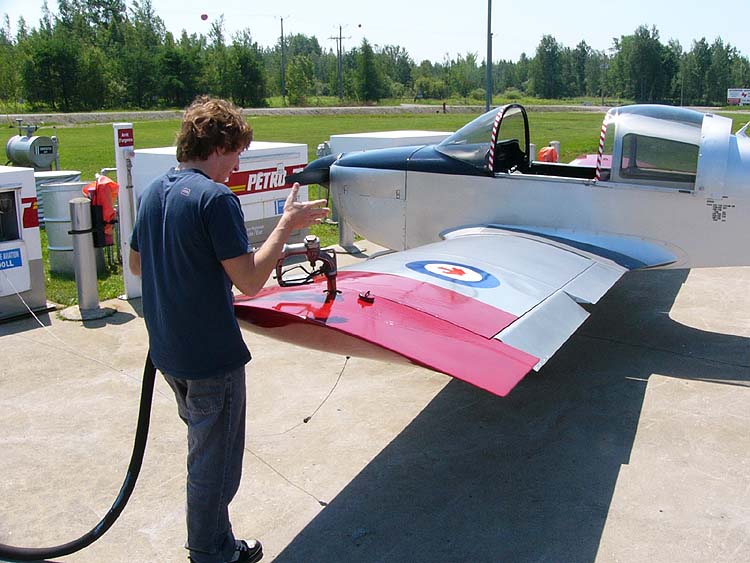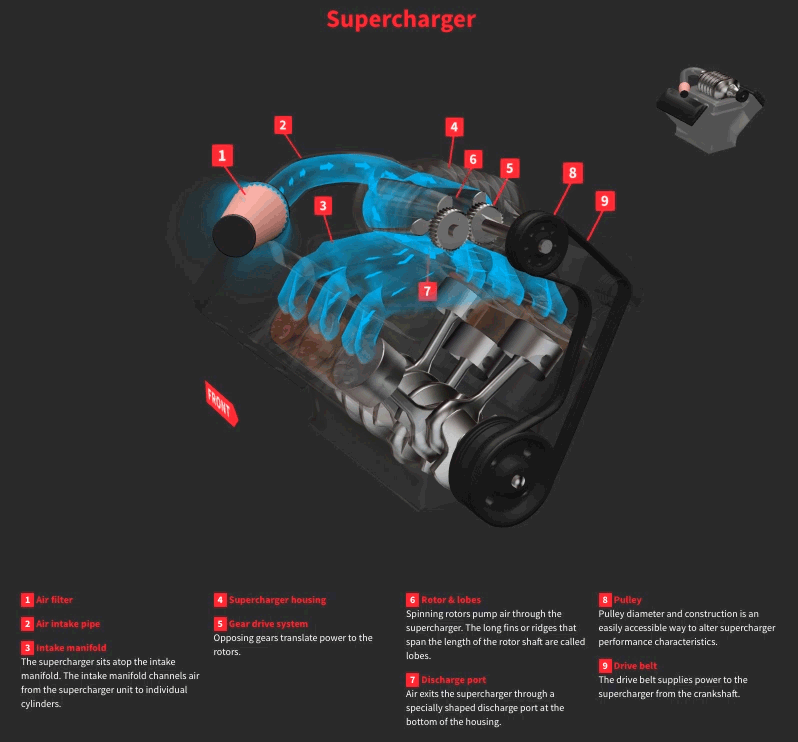|
Aviation Gasoline
Avgas (aviation gasoline, also known as aviation spirit in the UK) is an aviation fuel used in aircraft with spark-ignited internal combustion engines. ''Avgas'' is distinguished from conventional gasoline (petrol) used in motor vehicles, which is termed ''mogas'' (motor gasoline) in an aviation context. Unlike motor gasoline, which has been formulated without lead since the 1970s to allow the use of catalytic converters for pollution reduction, the most commonly used grades of avgas still contain tetraethyl lead, a toxic lead-containing additive used to aid in lubrication of the engine, increase octane rating, and prevent engine knocking (spark-knock). There are ongoing efforts to reduce or eliminate the use of lead in aviation gasoline. Kerosene-based jet fuel is formulated to suit the requirements of turbine engines which have no octane requirement and operate over a much wider flight envelope than piston engines. Kerosene is also used by most diesel piston engines dev ... [...More Info...] [...Related Items...] OR: [Wikipedia] [Google] [Baidu] |
Thielert Centurion
The Thielert Centurion is a series of diesel cycle aircraft engines for general aviation originally built by Thielert, which was bought by Aviation Industry Corporation of China's Tecnify Motors subsidiary and is currently marketed by Continental Motors. They are based on heavily modified Mercedes-Benz automotive engines. Design All Centurion engines are liquid-cooled, turbocharged, and employ a single-lever power control (SLPC) associated with a full authority digital engine control (FADEC). This simplifies engine management for the pilot, as well as improving reliability as it prevents the engine being operated improperly. The series utilizes either jet fuel or diesel fuel. The high compression ratio of the engine combined with the digitally controlled fuel injection system mirrors similar advances in automotive technology. Centurion series engines are always fitted with constant speed propellers which allow the engine to be operated at optimum speed at all times. However ... [...More Info...] [...Related Items...] OR: [Wikipedia] [Google] [Baidu] |
Rolls-Royce Merlin
The Rolls-Royce Merlin is a British Coolant#Liquids, liquid-cooled V12 engine, V-12 Reciprocating engine, piston aero engine of 27-litre (1,650 cu in) Engine displacement, capacity. Rolls-Royce Limited, Rolls-Royce designed the engine and first ran it in 1933 as a private venture. Initially known as the PV-12, it was later called ''Merlin (bird), Merlin'' following the company convention of naming its four-stroke piston aero engines after birds of prey. The engine benefitted from the racing experiences of precursor engines in the 1930s. After several modifications, the first production variants of the PV-12 were completed in 1936. The first operational aircraft to enter service using the Merlin were the Fairey Battle, Hawker Hurricane and Supermarine Spitfire. The Merlin remains most closely associated with the Spitfire and Hurricane, although the majority of the production run was for the four-engined Avro Lancaster heavy bomber. The Merlin continued to benefit from a s ... [...More Info...] [...Related Items...] OR: [Wikipedia] [Google] [Baidu] |
Supercharger
In an internal combustion engine, a supercharger compresses the intake gas, forcing more air into the engine in order to produce more power for a given displacement (engine), displacement. It is a form of forced induction that is mechanically powered (usually by a belt from the engine's crankshaft), as opposed to a turbocharger, which is powered by the kinetic energy of the exhaust gases. However, up until the mid-20th century, a turbocharger was called a "turbosupercharger" and was considered a type of supercharger. The first supercharged engine was built in 1878, with usage in aircraft engines beginning in the 1910s and usage in car engines beginning in the 1920s. In piston engines used by aircraft, supercharging was often used to compensate for the lower air density at high altitudes. Supercharging is less commonly used in the 21st century, as manufacturers have shifted to turbochargers to reduce fuel consumption and increase power outputs, especially with reduced engine dis ... [...More Info...] [...Related Items...] OR: [Wikipedia] [Google] [Baidu] |
Vapor Lock
Vapor lock is a problem caused by liquid fuel changing state to vapor while still in the fuel delivery system of gasoline-fueled internal combustion engines. This disrupts the operation of the fuel pump, causing loss of feed pressure to the carburetor or fuel injection system, resulting in transient loss of power or complete stalling. Restarting the engine from this state may be difficult. The fuel can vaporize due to being heated by the engine, by the local climate or due to a lower boiling point at high altitude. In regions where fuels with lower viscosity (and lower boiling threshold) are used during the winter to improve engine startup, continued use of the specialized fuels during the summer can cause vapor lock to occur more readily. Causes and incidence Vapor lock was far more common in older gasoline-fuel systems incorporating a low-pressure mechanical fuel pump driven by the engine, located in the engine compartment and feeding a carburetor. Such pumps were typically loca ... [...More Info...] [...Related Items...] OR: [Wikipedia] [Google] [Baidu] |
Carbon Dioxide
Carbon dioxide is a chemical compound with the chemical formula . It is made up of molecules that each have one carbon atom covalent bond, covalently double bonded to two oxygen atoms. It is found in a gas state at room temperature and at normally-encountered concentrations it is odorless. As the source of carbon in the carbon cycle, atmospheric is the primary carbon source for life on Earth. In the air, carbon dioxide is transparent to visible light but absorbs infrared, infrared radiation, acting as a greenhouse gas. Carbon dioxide is soluble in water and is found in groundwater, lakes, ice caps, and seawater. It is a trace gas Carbon dioxide in Earth's atmosphere, in Earth's atmosphere at 421 parts per million (ppm), or about 0.042% (as of May 2022) having risen from pre-industrial levels of 280 ppm or about 0.028%. Burning fossil fuels is the main cause of these increased concentrations, which are the primary cause of climate change.IPCC (2022Summary for pol ... [...More Info...] [...Related Items...] OR: [Wikipedia] [Google] [Baidu] |
Emission Factor
Emission may refer to: Chemical products * Emission of air pollutants, notably: ** Flue gas, gas exiting to the atmosphere via a flue ** Exhaust gas, flue gas generated by fuel combustion ** Emission of greenhouse gases, which absorb and emit radiant energy within the thermal infrared range * Emission standards, limits on pollutants that can be released into the environment * Emissions trading, a market-based approach to pollution control Electromagnetic radiation * Emission spectrum, the spectrum of frequencies of electromagnetic radiation generated by molecular electrons making transitions to lower energy states * Thermal emission, electromagnetic radiation generated by the thermal motion of particles in matter * List of light sources, including both natural and artificial processes that emit light * Emission (radiocommunications), a radio signal (usually modulated) emitted from a radio transmitter * Emission coefficient, a coefficient in the power output per unit time of an el ... [...More Info...] [...Related Items...] OR: [Wikipedia] [Google] [Baidu] |
Canada Flight Supplement
The Canada Flight Supplement (CFS) () is a joint civil/military publication and is a supplement of the Aeronautical Information Publication (AIP Canada). It is the nation's official airport directory. It contains information on all registered Canadian and certain Atlantic Ocean, Atlantic aerodromes and certified airports.''Canada Flight Supplement – Canada and North Atlantic Terminal and Enroute Data''. Nav Canada, 2008. The CFS is published, separately in English and French, as a paper book by Nav Canada and is issued once every 56 days on the ICAO AIRAC schedule. The CFS was published by Natural Resources Canada on behalf of Transport Canada and the Department of National Defence (Canada), Department of National Defence until 15 March 2007 edition, at which time Nav Canada took over production. Contents The CFS presents runway data, arrival and departure procedures, air traffic control (ATC) and other radio frequencies and services such as aviation fuel, fuel, hangarage tha ... [...More Info...] [...Related Items...] OR: [Wikipedia] [Google] [Baidu] |
Nav Canada
Nav Canada (styled as NAV CANADA) is a privately run, non-profit corporation that owns and operates Canada's civil air navigation system (ANS). It was established by statute in accordance with the ''Civil Air Navigation Services Commercialization Act'' (ANS Act). The company employs approximately 1,900 air traffic controllers (ATCs), 650 flight service specialists (FSSs) and 700 technologists. It has been responsible for the safe, orderly and expeditious flow of air traffic in Canadian airspace since November 1, 1996 when the government transferred the ANS from Transport Canada to Nav Canada. As part of the transfer, or privatization, Nav Canada paid the government CA$1.5 billion. Nav Canada manages 12 million aircraft movements a year for 40,000 customers in over 18 million square kilometres, making it the world's second-largest air navigation service provider (ANSP) by traffic volume. Nav Canada, which operates independently of any government funding, is headquartered in ... [...More Info...] [...Related Items...] OR: [Wikipedia] [Google] [Baidu] |
Weight And Balance
The center of gravity (CG) of an aircraft is the point over which the aircraft would balance. Its position is calculated after supporting the aircraft on at least two sets of weighing scales or load cells and noting the weight shown on each set of scales or load cells. The center of gravity affects the stability of the aircraft. To ensure the aircraft is safe to fly, the center of gravity must fall within specified limits established by the aircraft manufacturer. Terminology ;Ballast: Ballast is removable or permanently installed weight in an aircraft used to bring the center of gravity into the allowable range. ;Center-of-Gravity Limits: Center of gravity (CG) limits are specified longitudinal (forward and aft) and/or lateral (left and right) limits within which the aircraft's center of gravity must be located during flight. The CG limits are indicated in the airplane flight manual. The area between the limits is called the ''CG range'' of the aircraft. ;Weight and Balance ... [...More Info...] [...Related Items...] OR: [Wikipedia] [Google] [Baidu] |
Density
Density (volumetric mass density or specific mass) is the ratio of a substance's mass to its volume. The symbol most often used for density is ''ρ'' (the lower case Greek letter rho), although the Latin letter ''D'' (or ''d'') can also be used: \rho = \frac, where ''ρ'' is the density, ''m'' is the mass, and ''V'' is the volume. In some cases (for instance, in the United States oil and gas industry), density is loosely defined as its weight per unit volume, although this is scientifically inaccurate this quantity is more specifically called specific weight. For a pure substance, the density is equal to its mass concentration. Different materials usually have different densities, and density may be relevant to buoyancy, purity and packaging. Osmium is the densest known element at standard conditions for temperature and pressure. To simplify comparisons of density across different systems of units, it is sometimes replaced by the dimensionless quantity "relative den ... [...More Info...] [...Related Items...] OR: [Wikipedia] [Google] [Baidu] |
Reformate
Catalytic reforming is a chemical process used to convert naphthas from crude oil into liquid products called reformates, which are premium "blending stocks" for high-octane gasoline. The process converts low-octane linear hydrocarbons (paraffins) into branched alkanes (isoparaffins) and cyclic naphthenes, which are then partially dehydrogenated to produce high-octane aromatic hydrocarbons. The dehydrogenation also produces significant amounts of byproduct hydrogen gas, which is fed into other refinery processes such as hydrocracking. A side reaction is hydrogenolysis, which produces light hydrocarbons of lower value, such as methane, ethane, propane and butanes. In addition to a gasoline blending stock, reformate is the main source of aromatic bulk chemicals such as benzene, toluene, xylene and ethylbenzene, which have diverse uses, most importantly as raw materials for conversion into plastics. However, the benzene content of reformate makes it carcinogenic, which has led to ... [...More Info...] [...Related Items...] OR: [Wikipedia] [Google] [Baidu] |






